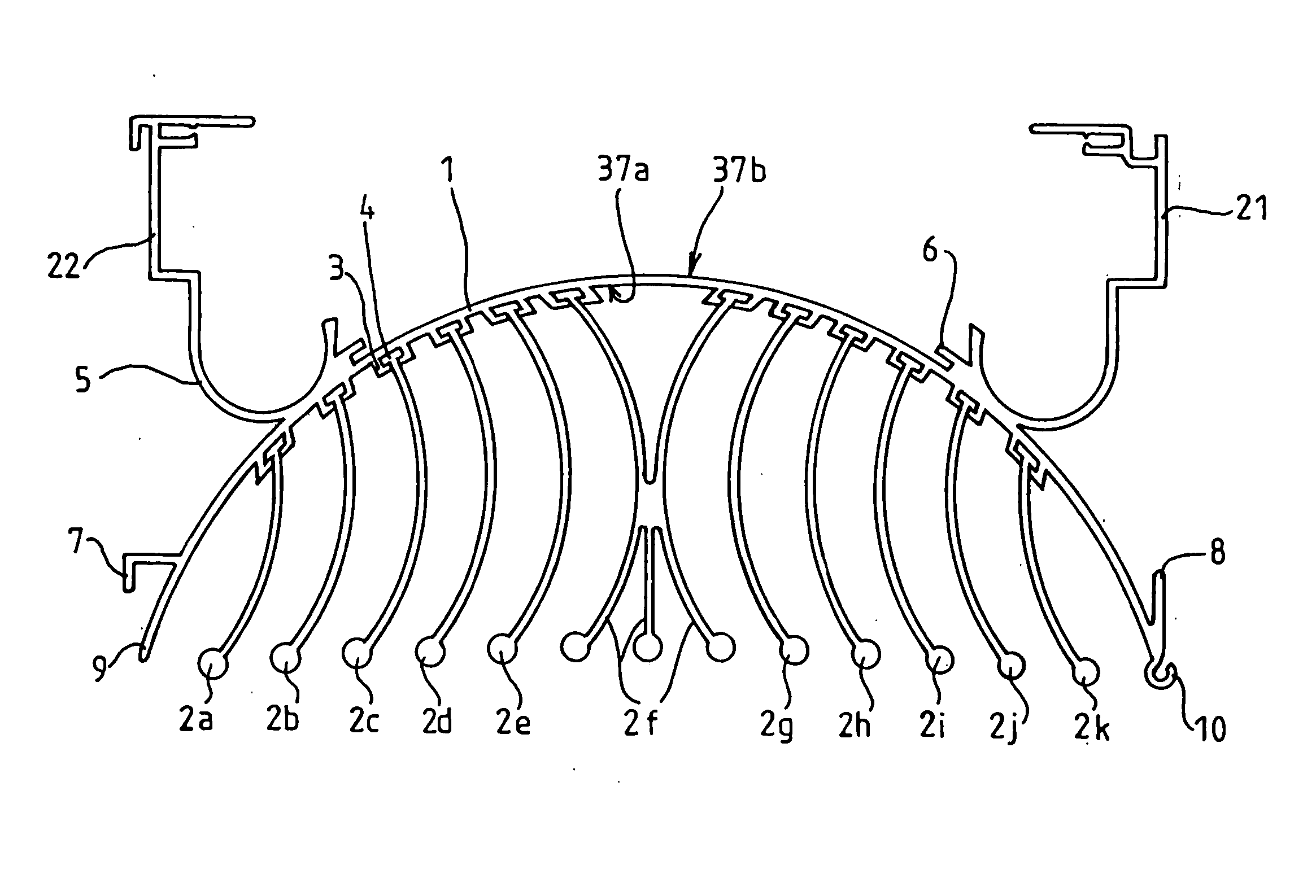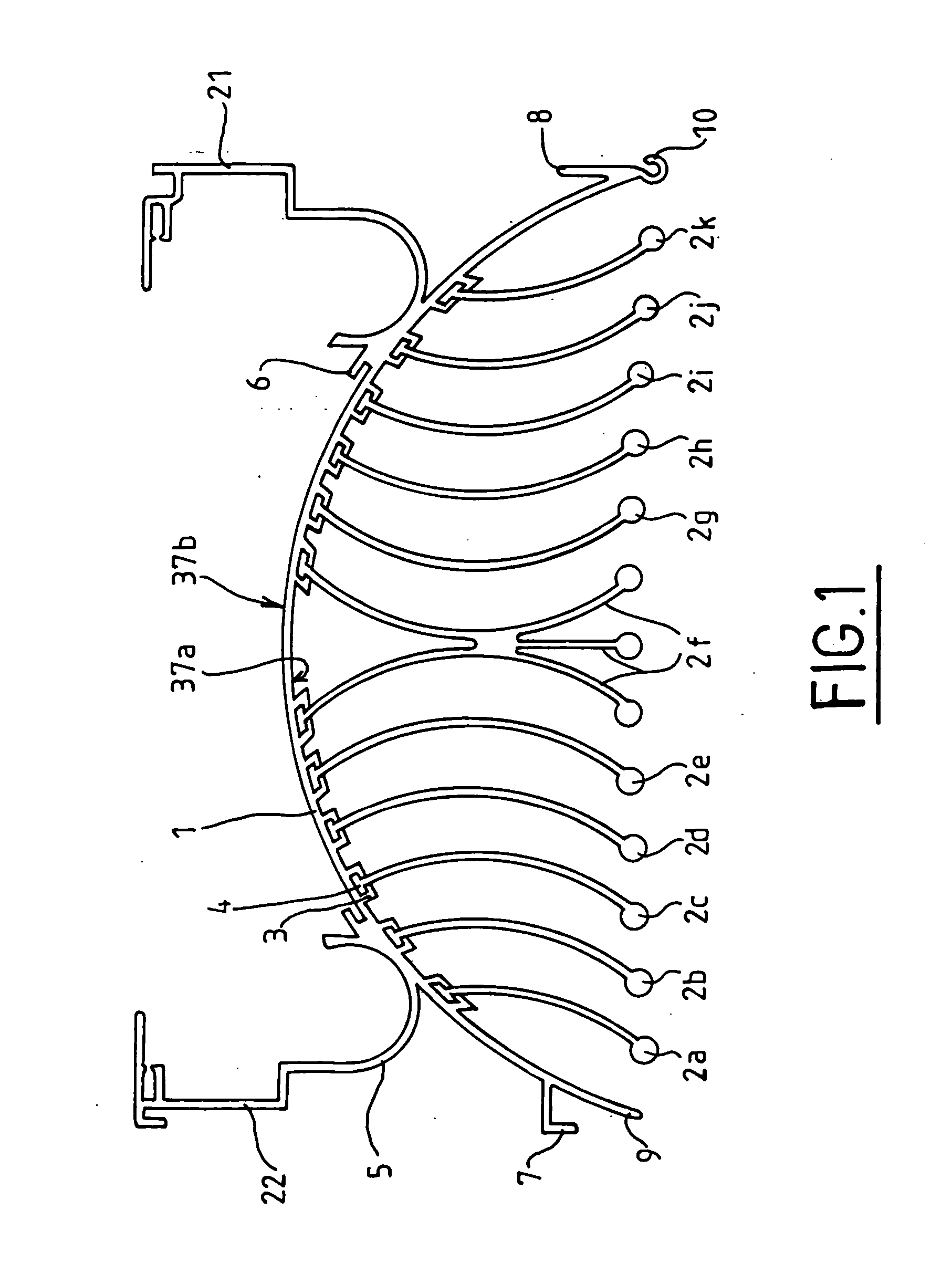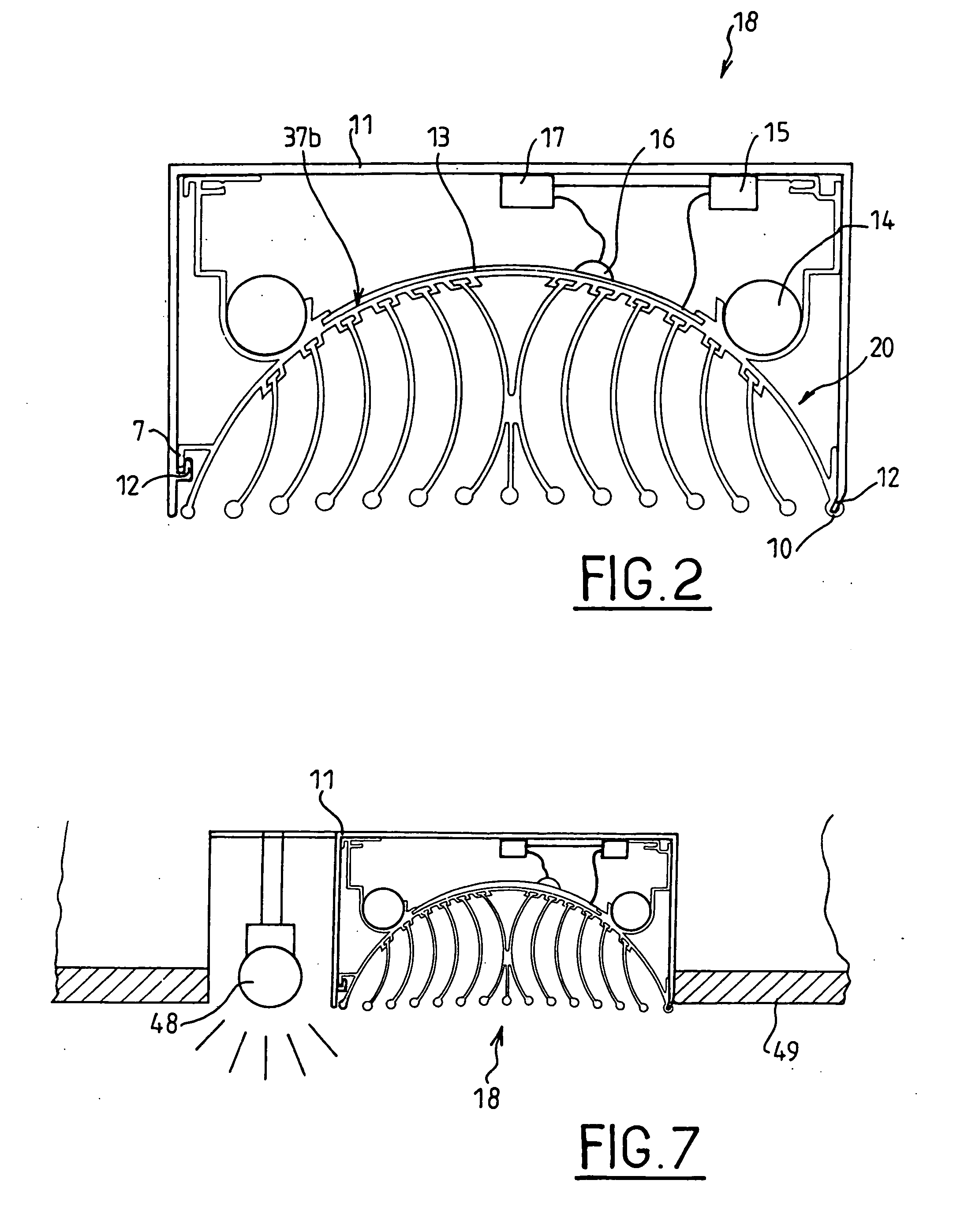Temperature exchanging element made by extrusion, and its applications
a technology of temperature exchange element and extrusion, which is applied in the field of thermal exchange and radiation energy collection device, can solve the problems of inability to modify the appearance, arrangement or dimensions of the radiator, and inability to envisage the use of another source of heat, etc., and achieves the effects of low cost, simple and rapidity, and high efficiency of the temperature exchange elemen
- Summary
- Abstract
- Description
- Claims
- Application Information
AI Technical Summary
Benefits of technology
Problems solved by technology
Method used
Image
Examples
Embodiment Construction
[0053] The operating principle implemented in the temperature exchanging element according to the invention is that of the use of a reduced ΔT (temperature difference) between the temperature production source and the source of use, thereby inducing a substantial improvement in efficiency, and consequently a substantial reduction in energy consumption. The temperature-exchanging element may be used in radiator mode to warm a room or in evaporator mode to reduce the temperature in a room.
[0054]FIG. 1 shows a top view of a temperature-exchanging element 20 according to the invention. In this embodiment, the temperature-exchanging element 20 incorporates a single-piece extruded base 1 onto which heat-exchanging fins 2a to 2k made by extrusion are attached. The single-piece base 1 has an external face 37a provided with guide rails 3 constituting reception means for the radiation fins and an inner face 37b provided with means 6 to integrate a heating element and means 5 to integrate a h...
PUM
| Property | Measurement | Unit |
|---|---|---|
| length | aaaaa | aaaaa |
| width | aaaaa | aaaaa |
| width | aaaaa | aaaaa |
Abstract
Description
Claims
Application Information
 Login to View More
Login to View More - R&D
- Intellectual Property
- Life Sciences
- Materials
- Tech Scout
- Unparalleled Data Quality
- Higher Quality Content
- 60% Fewer Hallucinations
Browse by: Latest US Patents, China's latest patents, Technical Efficacy Thesaurus, Application Domain, Technology Topic, Popular Technical Reports.
© 2025 PatSnap. All rights reserved.Legal|Privacy policy|Modern Slavery Act Transparency Statement|Sitemap|About US| Contact US: help@patsnap.com



